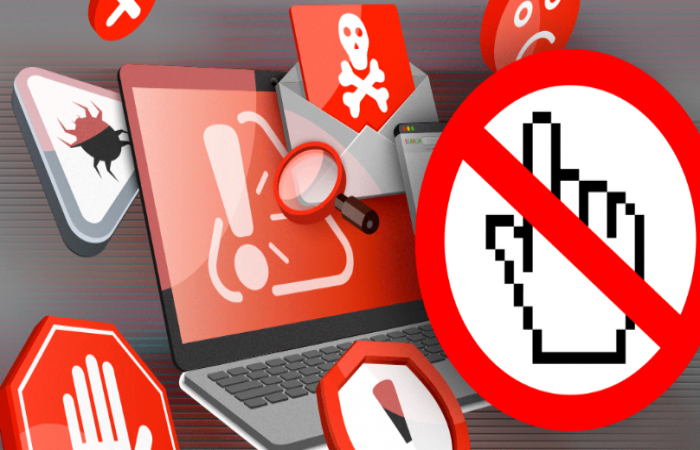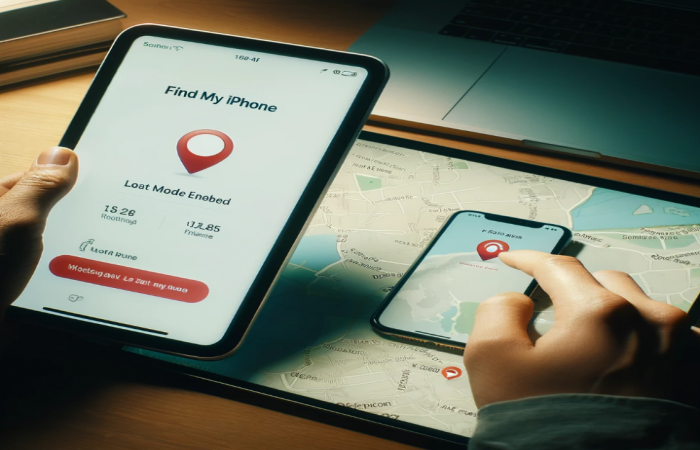
Stay Safe Online: How To Handle Suspicious Links on Social Media and Email
Links are everywhere—on social media, in emails, and even in messaging apps. While many are harmless, some links are crafted to trick users into sharing sensitive information or downloading malicious software. Phishing scams, fake websites, and malware-laden URLs are becoming more sophisticated, so knowing how to handle links safely is essential. Here’s a look at preventive measures you can take to stay secure when navigating links online.
Understanding the Risks of Unverified Links
Links sent via social media, email, and messaging platforms can pose various risks, especially if they come from unknown sources or look suspicious. Common threats include:
- Phishing Scams: Links that lead to fake websites designed to steal personal information, such as login credentials, bank details, or social security numbers.
- Malware and Viruses: Clicking on a malicious link can initiate a download of harmful software, infecting your device with malware, ransomware, or viruses.
- Spoofing Attacks: Links that appear to be from legitimate sources (such as your bank or social media) but lead to fake sites that look nearly identical to the real ones.
With these risks in mind, let’s explore the steps you can take to protect yourself from malicious links.
1. Inspect Links Before Clicking
One of the easiest ways to prevent accidental exposure to malware or phishing scams is to examine the URL carefully. Here’s how:
- Hover Over Links: On desktops, hover your mouse over the link to see the full URL. This allows you to check if the address is legitimate without actually clicking on it.
- Check for HTTPS: Secure sites usually start with “https” instead of “http.” Although not foolproof, the “https” designation indicates that the site encrypts data, which is generally safer.
- Beware of Shortened URLs: URL shorteners like bit.ly or TinyURL make it difficult to know where a link will take you. Use a URL expander tool to reveal the full address before clicking on a shortened link.
2. Verify the Source of the Message
Links from trusted sources are typically safer, but scammers often mimic legitimate brands or friends. Here are a few ways to check if a message is authentic:
- Look for Signs of Impersonation: Phishing emails and messages often contain minor misspellings in the email address or social media handle (e.g., “service@paaypal.com” instead of “service@paypal.com”).
- Contact the Sender Directly: If you receive a link from someone you know but weren’t expecting, reach out to them directly (outside the message or email thread) to confirm if they sent it.
- Be Wary of Urgent Language: Scammers often use urgent language to make users act quickly. Phrases like “Immediate Action Required” or “Your Account Will Be Closed” should raise a red flag.
3. Avoid Clicking Links in Unsolicited Emails and Messages
If you receive an unexpected link, especially one that prompts you to take quick action, it’s safer not to click. Instead:
- Go Directly to the Source’s Website: For example, if you receive a “security alert” email from your bank, visit the bank’s official website by typing the URL directly into your browser. This way, you can avoid phishing sites posing as legitimate organizations.
- Delete Suspicious Messages: If the message or email looks suspicious and comes from an unknown sender, delete it. Avoid responding to or interacting with the content in any way.
4. Use URL Scanners to Check Link Safety
When in doubt, use a URL scanner to verify a link’s safety. Websites like VirusTotal and Google Safe Browsing can analyze links for potential threats. Simply copy and paste the link into these tools to check if it’s flagged as dangerous.
- VirusTotal: Scans the link with multiple antivirus engines to detect any threats.
- Google Safe Browsing: Google offers a browsing tool that checks links against a list of unsafe web resources.
5. Update and Use Anti-Malware Software
Keeping your devices protected with the latest security software is essential. This software often has features that alert you when you’re about to access a dangerous link.
- Enable Automatic Updates: Ensure your antivirus and anti-malware software are set to update automatically so they can detect the latest threats.
- Use Browser Security Features: Modern browsers often have built-in security settings, such as warnings for phishing or malware sites. Make sure these settings are enabled.
6. Be Cautious of Pop-Ups and Embedded Links
Some sites contain pop-ups or clickable banners designed to lure you into clicking on a malicious link. Exercise caution when dealing with embedded links, especially those that seem out of place or overly promotional.
- Avoid Clicking on Random Pop-Ups: If you encounter a pop-up while browsing, it’s safer to close it. Some pop-ups contain hidden scripts that can install malware with a single click.
- Look Out for Fake “Download” Buttons: Scammers may insert fake download buttons on web pages. Only download files from trusted sources and double-check the URL before clicking.
7. Enable Multi-Factor Authentication (MFA)
In case a link does lead to a compromised site, having multi-factor authentication (MFA) on your accounts adds an extra layer of security. This way, even if a hacker gains access to your credentials, they’ll need an additional verification method to log in.
- Enable MFA on Important Accounts: Set up MFA for email, banking, and social media accounts to prevent unauthorized access.
- Choose Strong Security Questions: For added protection, choose security questions that only you would know, making it harder for cybercriminals to breach your accounts.
8. Familiarize Yourself with Common Phishing Tactics
Knowing what to look for in phishing scams can help you recognize and avoid them:
- Fake Login Pages: If a link leads to a login page, ensure it’s legitimate. Double-check the URL and look for any slight misspellings or extra characters in the domain.
- Requests for Sensitive Information: No reputable company will ask for sensitive information, such as passwords or financial details, through a link.
- Too-Good-to-Be-True Offers: If you’re promised something like a free prize or money, it’s likely a scam. Avoid clicking on links in such messages.
Final Thoughts
As online scams become more sophisticated, knowing how to handle links safely is essential. Taking the time to inspect URLs, verify sources, and utilize tools like anti-malware software and MFA can protect you from phishing, malware, and other online threats. By practising these simple yet effective preventive measures, you can browse with confidence and protect your personal information. Stay vigilant, stay informed, and stay safe online!

















